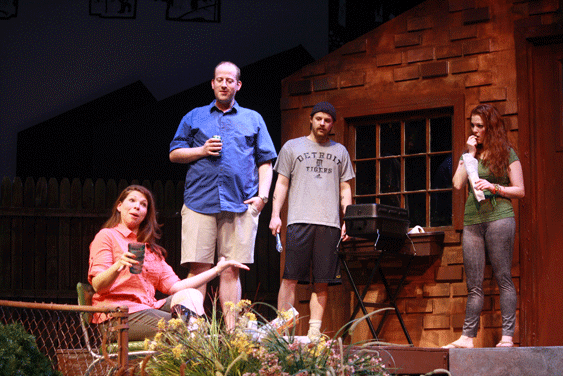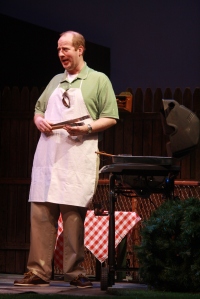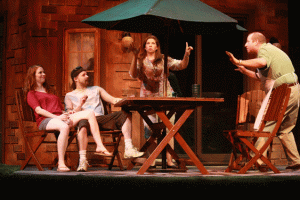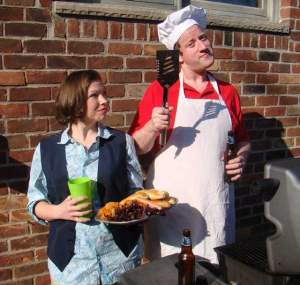Reviewed by Robert Delaney, The New Monitor
Join the Facebook Event or view our photo album!
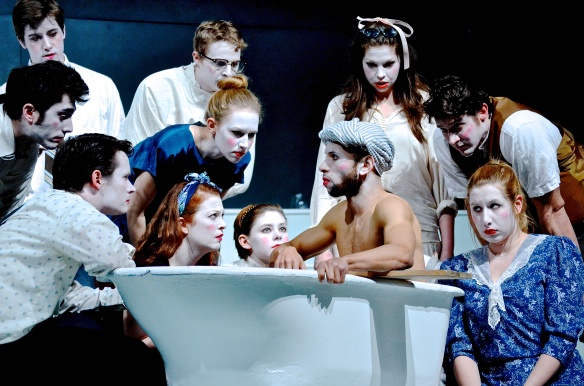
The Lunatics have are waiting for you.
Left to Right – Back row: Ty Mithcell, David Sterritt, Vanessa Sawson
Middle row: Rahbi Hammond, Megan Dobbertin, Brandon Grantz
Front row: Alec Barbour, Danielle Cochrane, Maggie Beson, Edmund Alyn Jones, Sarah Hawkins Moan
Credit: Kevin Replinger
The death of one of the men responsible for the Reign of Terror during the French Revolution is the subject of a play-within-a-play performed by inmates of an insane asylum, in Peter Weiss’ “Marat/Sade,” the latest production of the current season at Wayne State’s Hilberry Theatre. Weiss pretends the play being acted out by the inmates has been written by the infamous marquis who gave his name to sadism, and the long version of the play’s title is “The Persecution and Assassination of Jean-Paul Marat as Performed by the Inmates of the Asylum of Charenton Under the Direction of the Marquis De Sade” — perhaps the longest title ever given to a play.
Set in 1808, after the French Revolution has been supplanted by the rule of Napoleon Bonaparte, the inmates act out a play by their fellow inmate, the Marquis de Sade, who did indeed write plays for his fellow inmates to perform.
This play tells the story of the 1793 assassination of Marat, who was a supporter of Robespierre’s draconian campaign of executing anyone perceived as an enemy of the
revolution.
Weiss drew on the theatrical theories of Bertolt Brecht in his crafting of 1963 play, and although written a few years before the full fl owering of farleft political action that was to mark the later ‘60s, this avant garde work presents the vicious Marat in a sympathetic light (pretty much saying, even if he was a bit mad, later events proved him right).
It’s not a play to my taste, but I nevertheless found this Hilberry production — directed (and choreographed) by Matthew Earnest — quite impressive. Outstanding performances are given by Edmund Alyn Jones as Marat, Vanessa Sawson as Charlotte Corday (his assassin), Joe Plambeck as de Sade and Topher Payne as the Herald.
I had thought Jones would pretty well just be coasting to the end of his third year at the Hilberry after his stellar performance as Othello, yet here he is giving
another truly memorable performance.
And Sawson’s Corday (or more precisely, her inmate pressed into service to play Corday) may well be the best thing she has done in her Hilberry career. But absolutely every member of the cast is very good, and this is a thoroughly well done production in every aspect.
Also of the highest quality are the scenic design by Pegi Marshall-Amundsen and the costumes by Mary Leyendecker.
“Marat/Sade” continues through May 11 at the Hilberry Theatre, at Cass and West Hancock on the WSU campus in Detroit’s Midtown area. For performance and ticket information, call the WSU Theatre box offi ce (313) 577-2972 or go to http://www.wsushows.com.


